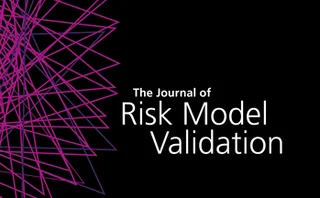Stress-testing
In light of Covid recession, Fed eases stress test scenario
Real GDP projected to fall 4%. In 2020, the simulated drop was 8.5%
EBA stress test to gird banks for long Covid depression
Real GDP projected to fall -12.9% from baseline by 2023
BoE to test UK banks against double-dip Covid recession
Stress simulation falls short of actual coronavirus crisis shock to the UK economy
BofA doubled held-to-maturity book in 2020
The bank moved mortgage bonds into HTM throughout the year
Fed stress tests find critics on all sides
Conflicting results fuel arguments over dividends and buybacks
US banks fear Q1 stress capital buffer reset
Fed left buffers on hold after latest stress test, but can change them until March 31, 2021
Regional banks, FBOs found second round of Fed tests tougher
DB, HSBC, PNC, US Bancorp and TD Group saw their peak-to-trough CET1 ratio depletion increase most
Fed’s Covid stress tests strain top banks’ leverage ratios
Citi, Goldman, JP Morgan, Morgan Stanley all had projected post-stress SLRs below 5%
Modeling loss given default regressions
The authors investigate the puzzle in the literature that various parametric loss given default (LGD) statistical models perform similarly, by comparing their performance in a simulation framework.
FSB offers loud warning and muted response on climate risk
Global regulators say risks are near-term and cross-border, but propose only data collection
Covid-19 overwhelmed stress-testing models – banks
Risk USA: lenders forced to apply management overlays to models skewed by macro inputs
Stress testing household debt
The authors estimate a county-level model of household delinquency and use it to conduct “stress tests” of household debt.
Regions deploys early-warning tool for credit risk
Risk USA: system alerted US superregional to impending defaults during Covid crisis
BoE warns banks: start preparing for a higher carbon price
Risk Live: stress tests should assume rising carbon price, regardless of government policy, says Breeden
Top US-based foreign banks shrink systemic footprints
US units of Barclays, Credit Suisse and Deutsche Bank have cut assets 40% since Q3 2016
Why the US election fallout was not a surprise to banks
A contested result was unexpected, but scenario planning meant banks weren’t unprepared
Big moves, but no panic after tumultuous US election
Treasury market saw its largest post-election move since at least 2000 – but liquidity held up
Banks fold climate, pandemic and cyber risks into CCAR
OpRisk North America: anchoring idiosyncratic risks to macro scenarios a challenge, say experts
US election scenarios: meltdown fears if poll contested
Crowdsourced election scenarios show sharp falls and correlation breaks if Trump challenges results
Thinking the unthinkable – Staying ahead of the crisis curve
Industry leaders discuss the increased value of stress-testing in a world rocked by its second financial crisis in 12 years, the likely emergence of non-financial risks, and how financial institutions can establish efficient and effective stress-testing…
Stress‑testing under Covid‑19
Stress‑testing is a challenging exercise to regularly assess a bank’s level of risk or capital adequacy. Olivier Brucker, Sunayana Mehra and Ed Young of Moody’s Analytics explore an approach that can address this, proposing an alternative methodology…
BoJ stress tests pressure top banks’ buffers
Capital ratios of internationally-active dealers projected to fall to 7.6% in worst-case scenario
A FAVAR modeling approach to credit risk stress testing and its application to the Hong Kong banking industry
In this paper, a credit risk stress testing model based on the factor-augmented vector autoregressive (FAVAR) approach is proposed to project credit risk loss under stressed scenarios.
Fed set to unveil operational resilience proposals
OpRisk North America: banks expected to design idiosyncratic stress scenarios to test resilience















